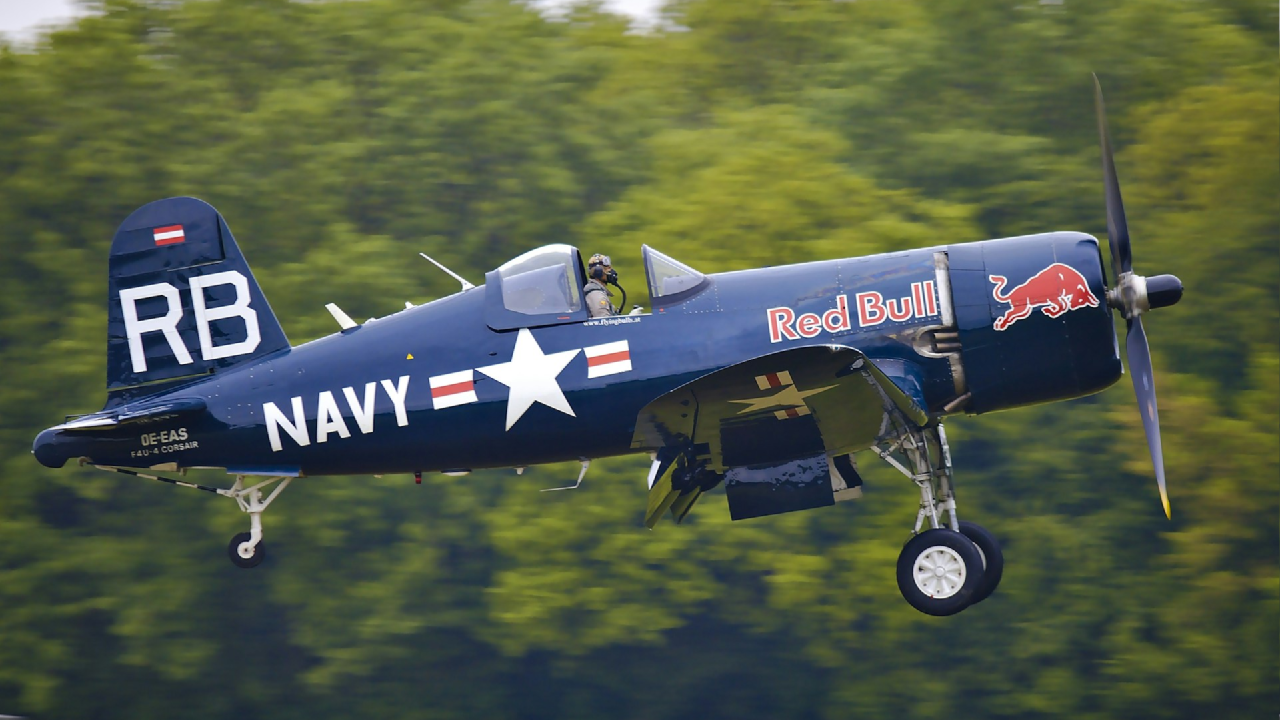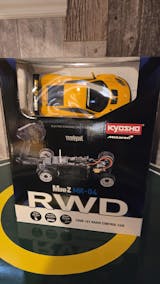The Vought F4U Corsair is one of the most iconic fighter aircraft to emerge from World War II. With its distinctive "bent-wing" design, unmatched performance, and versatility, the Corsair cemented its place in aviation history as a legendary warbird that served both in the skies of the Pacific and beyond.
Origins and Development

In the late 1930s, the U.S. Navy sought a new carrier-based fighter with the highest possible speed and climb rate to keep pace with global advancements in military aviation. Enter Vought Aircraft, which responded with a design that emphasized power and innovation. The Corsair was built around the massive Pratt & Whitney R-2800 Double Wasp radial engine, one of the most powerful engines of its time, capable of delivering up to 2,000 horsepower. The result was a powerful aircraft that broke the 400 mph barrier, making it one of the fastest planes in the U.S. arsenal.
Unique Design: The Iconic “Bent Wing”

One of the Corsair’s most recognizable features is its inverted gull wing, or “bent wing” shape. This unusual design was not just an aesthetic choice but a technical necessity. The high landing gear needed to accommodate the Corsair’s massive propeller would have required excessively long legs for a traditional wing layout. By “bending” the wings downward where they met the fuselage and then upward, Vought's engineers provided the necessary propeller clearance while reducing landing gear height and drag. This configuration gave the Corsair its characteristic look and improved its performance and stability.
Performance and Combat History

The Corsair was initially plagued by carrier suitability issues, with a tendency to bounce on landing and limited forward visibility due to its long nose. As a result, the Navy initially favored the Grumman F6F Hellcat for carrier operations, while the Corsair was primarily used by the U.S. Marine Corps for land-based operations in the early stages of its service. In the hands of Marine aviators, the Corsair quickly proved itself to be a highly effective fighter and ground-attack aircraft, earning the nickname "Whistling Death" from Japanese pilots due to the unique sound created by its wing-root air intakes.

The F4U Corsair excelled in aerial combat, with a kill-to-loss ratio of over 11:1 during WWII, thanks to its speed, firepower, and agility. It was instrumental in gaining air superiority over the Pacific Theater, famously used by Marine ace Gregory “Pappy” Boyington and the Black Sheep Squadron (VMF-214). The Corsair’s excellent performance allowed it to serve beyond WWII, seeing action during the Korean War as a ground-attack aircraft. In fact, its durability and effectiveness meant it remained in service with some nations into the 1960s.
Variants and Legacy

The Corsair underwent numerous modifications throughout its production, leading to several distinct variants. The F4U-1 was the original production model, while the F4U-4 introduced a more powerful engine and other improvements. The final variant, the F4U-7, was developed for the French Navy and featured additional updates for ground support and carrier operations.
In total, more than 12,500 Corsairs were produced, making it the longest production run for any piston-engined fighter in U.S. history. The Corsair’s legacy lives on today, with several flying examples in museums and airshows, allowing modern audiences to witness the power and beauty of this remarkable aircraft.

The Vought F4U Corsair remains one of the most celebrated fighter aircraft of the 20th century, cherished by aviation enthusiasts and remembered by military historians. Its distinctive design, combat effectiveness, and contributions to Allied victories in WWII have secured its place in history as one of the greatest fighter planes ever built. Today, the Corsair is a symbol of resilience, innovation, and the power of American aviation engineering, inspiring future generations of pilots and engineers alike.















